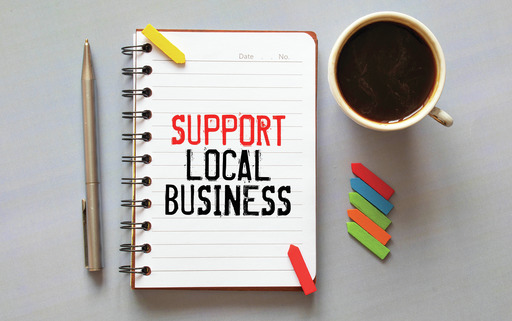(607NewsNow) — As a local business owner, you know the importance of standing out in our community. Two key tools to achieve this are a positioning statement and a slogan. While they may seem similar, they serve distinct purposes. I’ll explain the differences, why both matter, and how to create them in a few simple steps.
What’s the difference?
A positioning statement is an internal, strategic tool that defines how your business is uniquely valuable to your target customers. It guides your marketing, operations, and decision-making by clarifying:
· Who your target audience is
· What problem you solve or value you provide
· How you do it differently or better than competitors
· Why customers should choose you
It’s typically a concise sentence or two, used internally to align your team and externally in targeted marketing materials. For example, a local bakery might have this positioning statement: “For health-conscious families in Ithaca, Bob’s Bakery provides fresh, organic baked goods with locally sourced ingredients, offering a guilt-free indulgence competitors can’t match.”
A slogan is a short, catchy phrase designed for public use to stick in customers’ minds. It’s external facing, often used in commercial ads, signage, or social media to:
· Convey your brand’s personality
· Highlight a key benefit or emotion
· Build brand recognition
Unlike a positioning statement, a slogan doesn’t need to cover every detail—it’s about memorability. For the same bakery, a slogan could be: “Fresh. Organic. Local. Yum!”
Why both are important
A positioning statement helps to:
· Clarify your unique value: It forces you to pinpoint what makes your business special, helping you avoid generic marketing.
· Guide consistency: It ensures your team, from staff to marketers, communicates the same message.
· Attract the right customers: By focusing on your ideal audience, you avoid wasting resources on those who aren’t a fit.
While a slogan can:
· Boost brand recall: A memorable slogan makes your business top-of-mind when customers need your product or service.
· Create emotional connection: It evokes feelings or values that resonate with your audience, like trust or excitement.
· Amplify marketing: Slogans are versatile for logos, ads, or social media, reinforcing your brand everywhere.
Together, they work hand-in-hand: the positioning statement keeps your strategy focused, while the slogan brings it to life for customers.
How to create a positioning statement in three steps
1. Identify your target audience ask: Who are your ideal customers? Be specific—e.g., busy professionals in your area or families with young kids. Example: A local gym might target fitness-focused adults aged 25-45 in Ithaca.
2. Define your unique value and differentiation ask: What problem do you solve, and how do you do it better than competitors? Consider your strengths, like quality, price, or local ties. Example: The gym offers personalized training plans with small group classes, unlike generic chain gyms.
3. Write a concise statement and combine your answers into a clear sentence using this template: “For [target audience], [Business Name] provides [product/service] that [key benefit], unlike [competitor or alternative].” Example: “For fitness-focused adults aged 25-45 in Ithaca, [Gym Name] provides personalized training plans with small group classes, unlike generic chain gyms.”
How to create a slogan in three steps
1. Highlight a key benefit or emotion ask: What’s the one thing you want customers to feel or remember? Focus on a single idea, like quality, speed, or community. Example: The gym might emphasize “community and results.”
2. Keep it short and catchy: Aim for 3-7 words that are easy to say and memorable. Use rhythm, rhyme, or alliteration if possible. Example: “Stronger Together, Faster Results.”
3. Test it out: Say it aloud, share it with staff or customers, and ensure it feels authentic to your brand. Check if it works on signs, social media, or ads. Example: The gym’s slogan “Stronger Together, Faster Results” fits on a banner and resonates with group fitness fans.
Quick Tips for Success
· Involve your team: Get input from employees to ensure your positioning statement and slogan reflect your business’s reality.
· Know your community: Local businesses thrive by emphasizing hometown pride or local needs—use this in both tools.
· Revisit regularly: As your business grows or the market changes, update your statement and slogan to stay relevant.
Conclusion
A positioning statement and slogan are both powerful tools for local businesses to define their identity and connect with customers. By crafting a clear positioning statement, you align your strategy; with a memorable slogan, you capture hearts and minds. Follow the steps above to create yours, and watch your brand stand out in your community!



